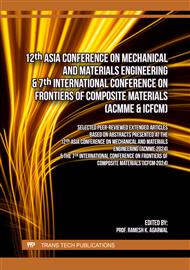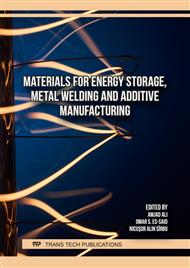p.29
p.41
p.51
p.61
p.69
p.75
p.83
p.93
p.101
Improving the Fatigue Performance of Binder Jet Manufactured 316L by Severe Shot Peening Surface Modification
Abstract:
Binder jetting is a rapidly evolving additive manufacturing technique, challenging the dominance of laser powder bed fusion in metal fabrication. This study focuses on the material properties of austenitic stainless steel 316L produced via binder jet technology. Porosity remains a significant challenge across additive manufacturing methods, adversely affecting material properties and fatigue life. To address this issue, we propose a novel approach employing severe shot peening as a post-processing treatment to enhance the material's characteristics. Microstructural analysis, including electron backscatter diffraction (EBSD), coupled with tensile testing, was conducted to evaluate the mechanical properties. Additionally, fatigue behavior was investigated under both axial and flexural bending loading conditions. The results revealed a substantial increase in material strength achievable through the post-treatment. Notably, the fatigue limit of the material in bending fatigue was elevated from 120 MPa to 190 MPa, indicating a significant enhancement in fatigue performance. This study contributes new insights into the enhancement of fatigue resistance in binder jet-manufactured 316L stainless steel through surface modification techniques. The findings underscore the potential of severe shot peening as an effective strategy to improve material properties and expand the applicability of binder jet printing in demanding industrial applications.
Info:
Periodical:
Pages:
101-108
Citation:
Online since:
October 2024
Authors:
Keywords:
Price:
Сopyright:
© 2024 Trans Tech Publications Ltd. All Rights Reserved
Share:
Citation:



